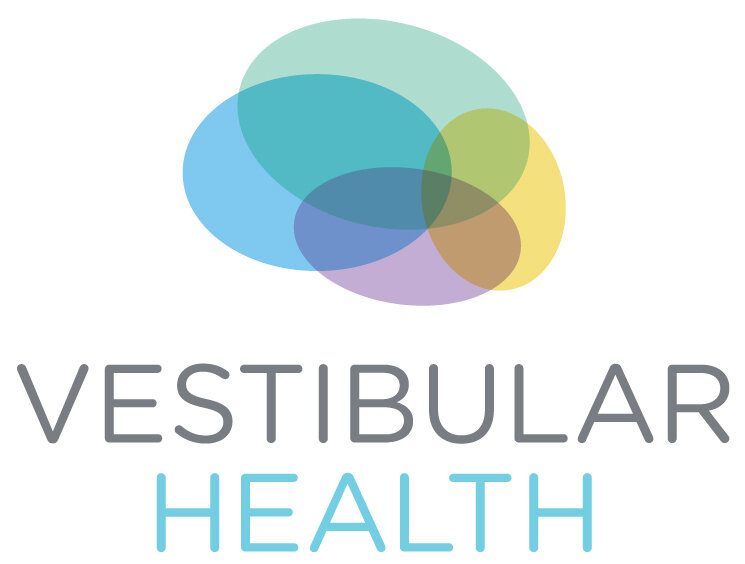Rare vestibular conditions: Vestibular paroxysmia
What is vestibular paroxysmia?
Vestibular paroxysmia is a rare vestibular disorder that causes frequent attacks of vertigo (abnormal sensation of movement).
This syndrome is believed to be caused by neurovascular cross compression - meaning the 8th cranial nerve (vestibulocochlear nerve) is pressed on or irritated by a nearby blood vessel. The 8th cranial nerve is responsible for hearing and balance, so these functions are affected if the nerve is compressed. It is thought that a blood vessel ‘loop’ around the nerve is involved.
What are the symptoms of vestibular paroxysmia?
Symptoms of vestibular paroxysmia are episodic, meaning they come and go. Symptoms occur very frequently in this condition (sometimes several times a day) and usually occur over a period of months.
The primary symptoms of vestibular paroxysmia are attacks of vertigo (spinning or non-spinning) that usually lasts seconds and occur spontaneously without any identifiable triggers. (In rare cases however it can go on for a minute or more and may also be triggered by head movements or hyperventilation.) You may feel unsteady or off balance during attacks, but often feel completely normal between attacks.
Sometimes there may be tinnitus (ringing, buzzing, or other noise in the ear) or sensitivity to sound during the attacks. If the 7th cranial nerve (facial nerve) is also affected there may be hemifacial spasm (twitching/contraction of face muscles on one side) during attacks - this can occur because there are areas where the 7th and 8th cranial nerves are close together.
Although different individuals experience different symptoms, each person’s own attacks are usually the same or very similar during every episode.
How do you know if I have vestibular paroxysmia?
Your physician will use the diagnostic criteria for ‘definite vestibular paroxysmia’ or ‘probable vestibular paroxysmia’ from the Bárány Society. A diagnosis of vestibular paroxysmia is made based on your symptoms, and if all other possible causes for your symptoms have been ruled out. There are other inner ear conditions that can look like vestibular paroxysmia, so a full vestibular exam (and vestibular function testing, if indicated) can aid in the recognition of this rare condition.
Diagnostic criteria for vestibular paroxysmia:
Vestibular paroxysmia (each point needs to be fulfilled)
A. At least ten attacks of spontaneous spinning or non-spinning vertigo
B. Duration less than 1 minute
C. Stereotyped phenomenology in a particular patient
D. Response to a treatment with carbamazepine/oxcarbazepine
E. Not better accounted for by another diagnosis
Probable vestibular paroxysmia (each point needs to be fulfilled)
A. At least five attacks of spinning or non-spinning vertigo
B. Duration less than 5 minutes
C. Spontaneous occurrence or provoked by certain head-movements
D. Stereotyped phenomenology in a particular patient
E. Not better accounted for by another diagnosis
Treatment for vestibular paroxysmia
The primary treatment for vestibular paroxysmia is medication. Carbamazepine or oxcarbazepine (which are anti-seizure medications) can decrease the frequency and intensity of attacks. If this medication helps your symptoms, it supports the diagnosis of vestibular paroxysmia.
Surgical microvascular decompression of the vestibulocochlear nerve is a possible treatment if your symptoms do not improve with medication and if imaging (MRI) clearly identifies a blood vessel loop causing compression or irritation to the nerve.
Vestibular rehab for vestibular paroxysmia
A vestibular rehab physiotherapist with advanced training will recognize vestibular paroxysmia as a rare but possible cause of vertigo during their assessment and treatment. If your physiotherapist suspects this condition, they will work with your family doctor to get you a referral to an otolaryngologist (ENT) or a neurotologist.
Vestibular rehabilitation exercises will not change the frequency or intensity of attacks of vertigo caused by vestibular paroxysmia. A vestibular physiotherapist can help you better understand this condition and help you track your episodes. Vestibular therapy for vestibular paroxysmia focuses on strategies to help you stay physically active and exercises to improve your balance.
Thumbnail image source: commons.wikimedia.com
-
Brandt T, Strupp M, Dieterich M. Vestibular paroxysmia: a treatable neurovascular cross-compression syndrome. J Neurol. 2016 Apr;263 Suppl 1:S90-6. [link]
Strupp M, Lopez-Escamez JA, Kim JS, Straumann D, Jen JC, Carey J, Bisdorff A, Brandt T. Vestibular paroxysmia: Diagnostic criteria. J Vestib Res. 2016;26(5-6):409-415. [link]
Dieterich M, Brandt T. Vestibular paroxysmia: a systematic review. J Neurol. 2025;272(3):188. doi:10.1007/s00415-025-12913-8. [link]
